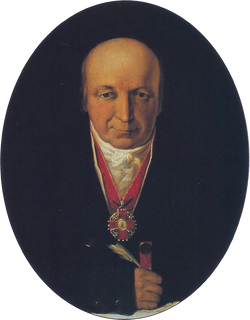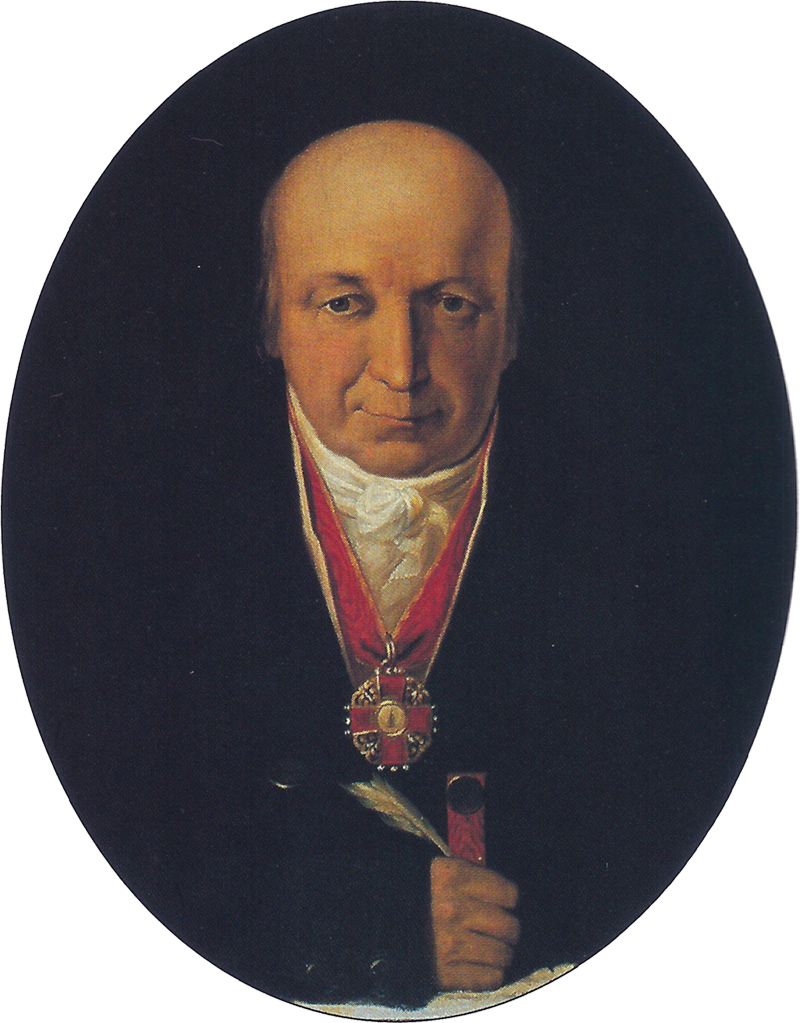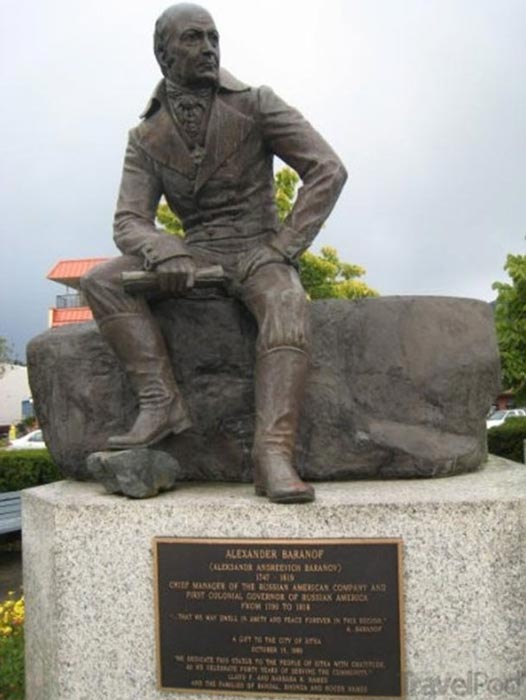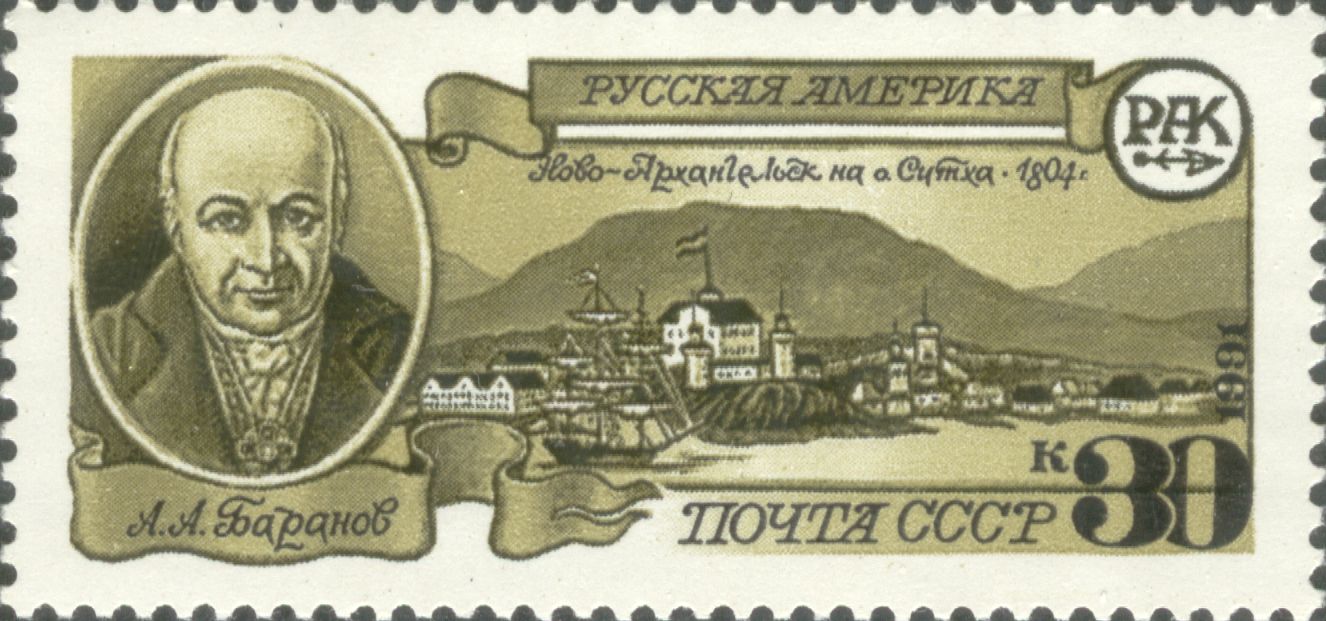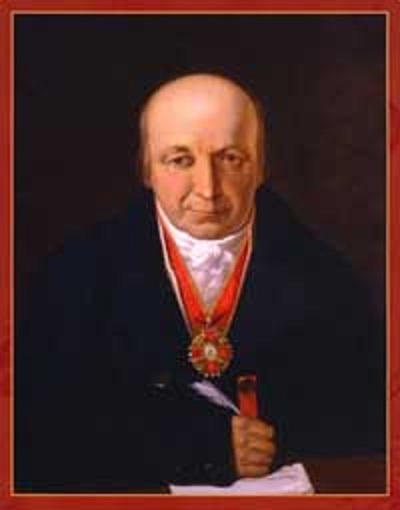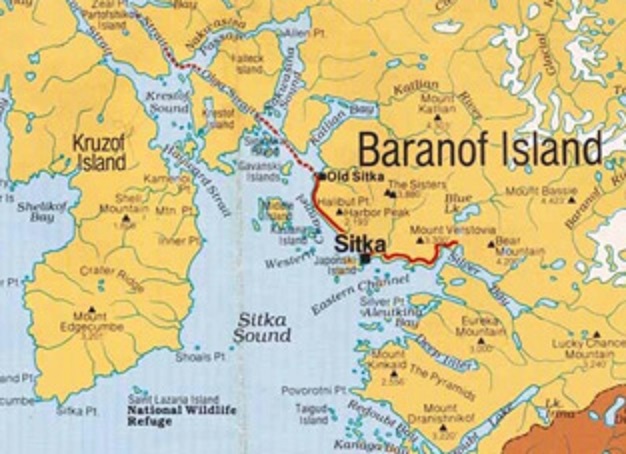was born in Kargopol, in St. Petersburg Governorate. Alexander ran away from home at the age of fifteen to Moscow, where he became a clerk before returning home. After marrying and the birth of a daughter, he left for Siberia. In Irkutsk, he became a trader and tax collector with his brother. He was then lured to Russian America, by Grigory Ivanovich Shelikhov, and the growing Maritime Fur Trade there. He became the chief manager of the Russian-American Company, establishing and managing trading posts in the Kodiak Island region from 1790 onwards.
In 1792, he moved the Kodiak Island settlement from Three Saints Bay to Pavlovsk. In 1793, he founded the port of Voskresensk in Chugach Bay, and a settlement in Yakutat Bay in 1795. In 1799, he started the settlement in Sitka Sound. In 1807 Branov was awarded the Order of St. Anna, 2nd class. In 1812, he established Fort Ross.
From 1799 to 1818, through Nikolai Rezanov's intervention, he managed all of the company's interests, including the Aleutian and Kuril Islands. Activity in the region flourished as trading in sea otters and seals boomed. Baranov convinced native hunters to expand their range to include the coasts of California.:60 Baranov also advocated more educational opportunities for the Alaska Native Americans. Under his leadership, schools were created and frontier communities became less isolated 112 During Baranov's rule, Russian Orthodox missionaries operated in Russian America.
Baranov was replaced as chief manager and governor in January, 1818, by Russian navy Capt. Lt. Leontii Hagemeister. Kirill Khlebnikov was appointed Office Manager, receiving company capital totaling two and a half million rubles. On 27 Nov., Baranov left Alaska on the ship Kutuzov for Russia. The ship headed south on a route that would take it around the Cape of Good Hope. En route, the ship made an extended stopover in the Dutch settlement of Batavia, on the island of Java, then part of the colonial Dutch East Indies (present day Indonesia), in March, 1819. Alexander Andreyevich Baranov became ill there, and soon after the ship resumed its journey he died on 28 April (OS 16 April), and was buried at sea in the Sunda Strait off Prince Island.
In October, 1818, Hagemeister appointed Baranov's son-in-law, navy Lt. Semyon Ianovsky, to take his place as chief manager and governor.
Baranof Island in Alaska is named after Baranov as is a U.S. Coast Guard Cutter and a US Liberty ship.
was born in Kargopol, in St. Petersburg Governorate. Alexander ran away from home at the age of fifteen to Moscow, where he became a clerk before returning home. After marrying and the birth of a daughter, he left for Siberia. In Irkutsk, he became a trader and tax collector with his brother. He was then lured to Russian America, by Grigory Ivanovich Shelikhov, and the growing Maritime Fur Trade there. He became the chief manager of the Russian-American Company, establishing and managing trading posts in the Kodiak Island region from 1790 onwards.
In 1792, he moved the Kodiak Island settlement from Three Saints Bay to Pavlovsk. In 1793, he founded the port of Voskresensk in Chugach Bay, and a settlement in Yakutat Bay in 1795. In 1799, he started the settlement in Sitka Sound. In 1807 Branov was awarded the Order of St. Anna, 2nd class. In 1812, he established Fort Ross.
From 1799 to 1818, through Nikolai Rezanov's intervention, he managed all of the company's interests, including the Aleutian and Kuril Islands. Activity in the region flourished as trading in sea otters and seals boomed. Baranov convinced native hunters to expand their range to include the coasts of California.:60 Baranov also advocated more educational opportunities for the Alaska Native Americans. Under his leadership, schools were created and frontier communities became less isolated 112 During Baranov's rule, Russian Orthodox missionaries operated in Russian America.
Baranov was replaced as chief manager and governor in January, 1818, by Russian navy Capt. Lt. Leontii Hagemeister. Kirill Khlebnikov was appointed Office Manager, receiving company capital totaling two and a half million rubles. On 27 Nov., Baranov left Alaska on the ship Kutuzov for Russia. The ship headed south on a route that would take it around the Cape of Good Hope. En route, the ship made an extended stopover in the Dutch settlement of Batavia, on the island of Java, then part of the colonial Dutch East Indies (present day Indonesia), in March, 1819. Alexander Andreyevich Baranov became ill there, and soon after the ship resumed its journey he died on 28 April (OS 16 April), and was buried at sea in the Sunda Strait off Prince Island.
In October, 1818, Hagemeister appointed Baranov's son-in-law, navy Lt. Semyon Ianovsky, to take his place as chief manager and governor.
Baranof Island in Alaska is named after Baranov as is a U.S. Coast Guard Cutter and a US Liberty ship.
Advertisement
Records on Ancestry
Sponsored by Ancestry
Advertisement
